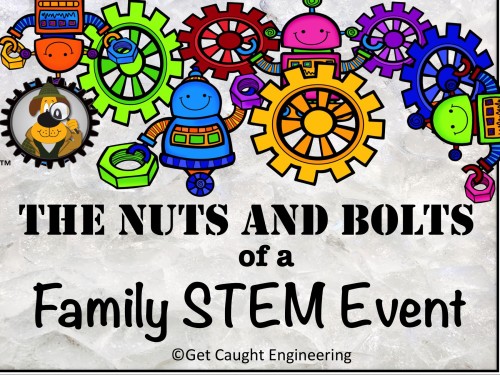
Gearing up for a STEM event this spring? Once the testing season is over, a fun family festival that emphasizes hands-on STEM activities is a wonderful way to end the year. Having special Family STEM nights or an engineering day has become increasingly more popular across the country. These events are not only entertaining but are also educational and allow the students to explore solutions to engineering problems, solve math problems and investigate science phenomena with the most important people in their lives – their families. Moreover, parents and grandparents are given the opportunity to actively participate in their child’s learning. It’s an exciting and memorable occasion for all.

Over the past six years, our school has hosted an annual Family STEM Night that has broken school records for attendance and been used as a model for other schools. Family STEM night has connected our students and their families with professional engineers and scientists who volunteer to facilitate activities. One of the biggest benefits of the evening has been the outreach connection for culturally diverse families in our community. This is primarily due to our emphasis that children and parents participate in activities as a family. Students are not allowed to just be dropped off and left at the event without an adult. Fantastic discussions and interaction occur as parents or grandparents and children worked to solve STEM problems. One of the most satisfying experiences is watching a student explain to their parents how to follow the Engineering Design Process in order to solve a problem. Student’s eyes brighten as they assume the role of teacher and act as leader of their family design team. We have now organized family STEM celebrations not only at our school but also at museums and the enthusiasm for these interactive events is contagious.
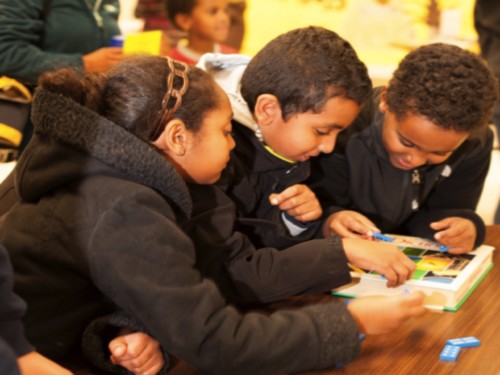
The secret to success? Planning, planning, and more planning is crucial. What helps us to begin our planning is selecting a theme. There are lots of great resources available and that alone can cause “cognitive overload.”A theme helps you to zero in on a selection of activities. We have used super hero, art, fairy tales, space, time travel, and history as successful themes for programs.
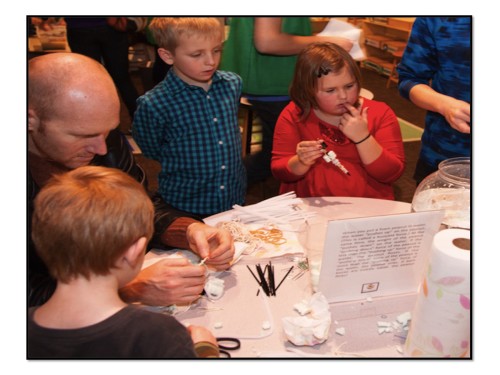
Studying each grade level’s curriculum and identifying commonalities can help find ideas for other themes for STEM days. For example, one STEM day theme we like to use is “Oceans” which lends itself to many different hands on investigations. It also helps to ensure that the activities can be done by the wide range of ages that will be participating.
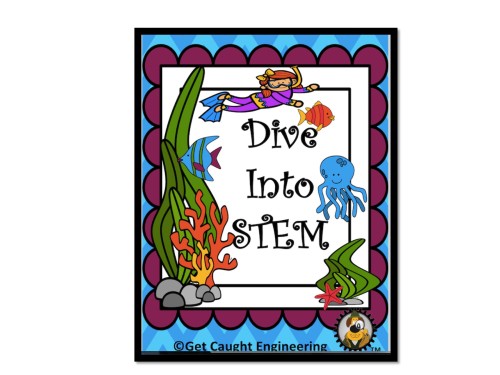
“Engineering Nature” has also been another popular theme with activities ranging from creating spider webs to building bird nests and solving a pond pollution problem.
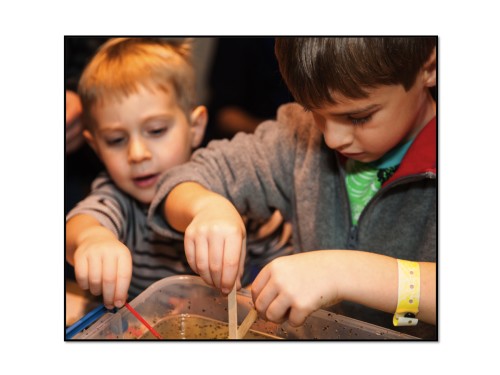
Whatever type of STEM event or theme you choose, careful planning and communication with the staff and volunteers are the keys to success. Beginning the planning process early not only reduces the stress of putting on a large event, but allows time to get the necessary volunteers. Don’t be afraid to ask local chapters of engineering and science associations to bring activities that families can participate in since many of these organizations have outreach programs. Local universities also are a wonderful resource as they typically have student associations that do outreach. We have found that contacting the science department of the local high school or scout troops will also provide volunteers as they frequently have required community service hours.
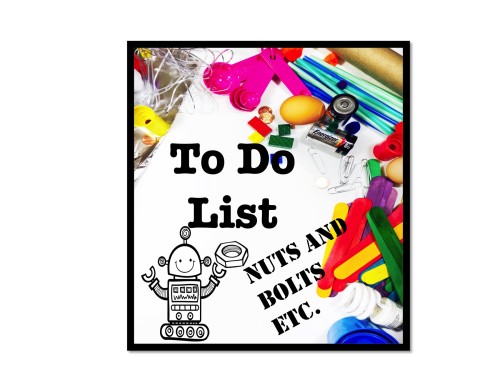
In the Beginning
- After consulting with the principal, lead teachers and other staff decide the type of STEM event you will be putting on this spring. Now is a good time to begin to choose a theme for your event.
- Choose a date and time and put it on the school calendar. Be sure to have an alternate date due to inclement weather.
Two Months Out
- Present the concepts theme and ideas to the staff and enlist volunteers to serve on a planning committee. This committee will immediately meet to choose activities, locate resources, and determine supplies needed.
- Write letters to local businesses requesting exhibits, supplies or donations to purchase materials.
- Write letters to local universities, local engineering societies, and businesses for volunteers.
- Send an information flyer home with students inviting parents to volunteer as well as a list of supplies needed that can be donated. Be sure that you have a collection site and have a plan to organize the materials as they arrive.
- Send an email to the staff requesting volunteers for the event.
One Month Out
- Invite other school administrators and special guests.
- Notify the local press about your event. Ask for them to cover the event well as send a photographer.
- Make sure the event is advertised on the PTA website, school website, and school outdoor sign if there is one.
- Create a schematic drawing of where each activity will be completed and inventory tables needed in order to decide if more tables are needed
Three Weeks Out
- Assign volunteers their tasks. Make sure you have people to help set up and clean up. Note: at least two people (preferably those who have been most involved in all aspects of planning) should not be assigned a specific center so they can keep an eye on everything and deal with issues if they arise. Scissors break, string runs out, and things spill, so you will need runners to deal with this.
- Give staff members and other volunteers their design briefs and activities. Remind them to actually do the activities so that any problems or questions can be answered.
- Begin to make activity packets for each center.
- Purchase materials still needed.
- Arrange for any refreshments for volunteers- if applicable.
- Continue to advertise: posters in school, PTA newsletter, community newsletter, school website and Facebook page.
- Develop a system for distribution of attendees. You don’t want them all heading to one area. We use colored- coded fliers that are distributed by greeters at the door. Each color has families heading to different locations so the population is spread though out the event and we don’t end up with bottlenecks in areas.
One Week Out
- Make sure your custodial staff knows of any furniture, tables or equipment that they will need to move.
- Draw a master floor plan that includes furniture and labels for activities. Make duplicates so these can be given to volunteers who will be setting up.
- Inventory trash cans needed.
- Create a check-in system and schedule for volunteers.
- Verify volunteers via email or phone
- Prepare thank you notes for volunteers so those are ready for the day after the event.
Day Before Event
- Posters of engineers at their jobs, descriptions of engineering careers and quotes from engineers about engineering are all possibilities. Adding some balloons at the registration table or the entrance not only adds a festive atmosphere, but also designates where the families should stop first and get information.
- Organize materials in boxes for each area and add garbage bags to each box.
- Create a central location for extra supplies such as scissors and tape.
Day of Event
- Assign one person to be photographer who will rotate through the activities throughout the evening.
- Don’t forget to keep the office staff abreast of important aspects of the event, especially those involving outside volunteers so that she or she can field phone calls.
- Order pizza for the volunteers who are staying after school and won’t have time to go home for dinner before the events starts.
- Set up should begin at least three hours before the actual event.
- Have fun!!!
This planning list is available as a free downloadable check off list.
The Nuts and Bolts of a Family STEM Event Check Off List
Resources to the Rescue!
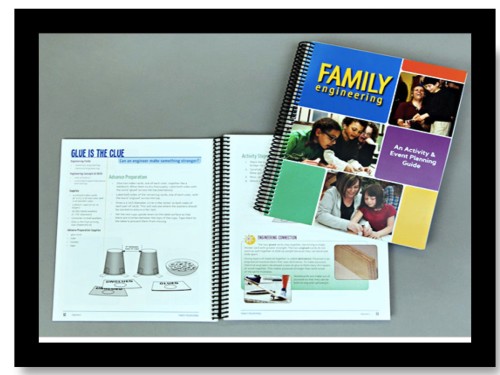
To help with activity selection, there are some great resources available for ideas. The very best reference tool available is a manual published by the Family Science organization in Portland, Oregon. Their web site is at Familyengineering.org. Their book called Family Engineering is filled with instructions, ready to copy lessons and everything you need to plan your own engineering night.
Other resources with great ideas include:
Children’s Engineering Educators http://www.childrensengineering.com/
Engineering- Go for It www.egfi-k12.org
Engineering Is Elementary www.mos.org/eie
Engineer Your Life www.engineeryourlife.org
Family Science www.familyscience.org
National Engineers Week Foundation www.eweek.org
PBS Design Squad pbskidsgo.org/designsquad
A few years ago we co-authored an article on STEM family events that is available to download from the National Science Teachers Association website. It includes lots of information on organizing an evening for the school community.
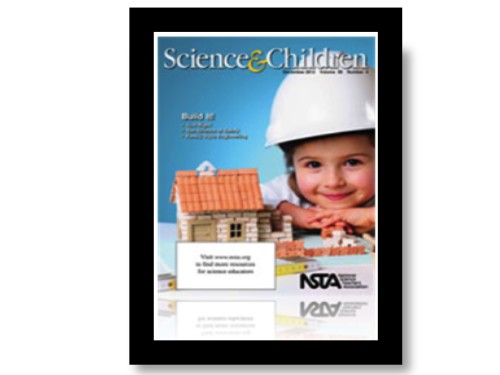
NSTA Science and Children Journal
Family STEM Night or an Engineering Day is one of the most exciting community events that a school or museum can plan. This is a great time of year to begin organizing for an evening or day. Yes, it is a great deal of work and needs lots of volunteers. But with pre-planning and community support, you will not find a more fantastic hands-on learning experience of 21st century skills for students and families. As soon as you finish, we can almost guarantee that parents and children will begin asking you when the next STEM event will be scheduled! We encourage you to “Spring into STEM” with your community.
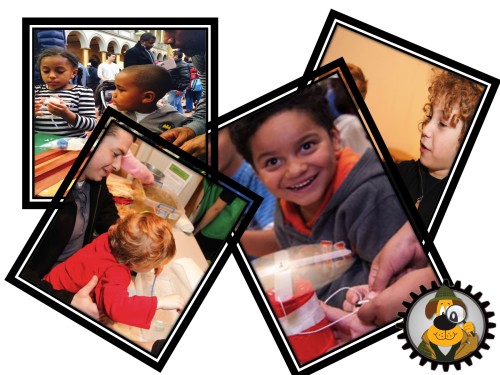
We hope you ” Get Caught Engineering” at a Family STEM Event!
Wendy and Cheryl
Get Caught Engineering – STEM for Kids
Clip Art Credit : Creative Clips




1 Comment
Leave your reply.